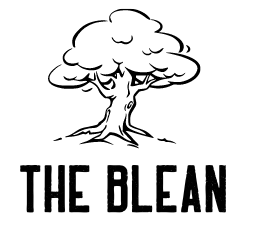Three Types of Cherry Wood

The grain in Cherry Wood varies from smooth to curly, with a semi-porous or diffuse-porous end grain. Cherry wood contains mineral deposits that give it a unique grain. There are three main types of cherry wood: English, Chilean, and Brazilian. Let’s look at each type in more detail. If you’re looking for beautiful furniture, consider using Cherry Wood for your project. You’ll be glad you did!
Back Cherry wood
If you’re interested in building with a beautiful hardwood, Back Cherry wood is an excellent choice. This species starts out light pink, but dries to a deep brown color. Back Cherry wood, also known as American cherry, is one of the most popular species of hardwood in the U.S. It has warm colors, and great finishing properties. Read on to learn more about this beautiful hardwood. But first, let’s talk about its characteristics.
Black Cherry isn’t commonly used as a landscape tree. It grows rapidly – about two feet per year – and is adaptable to a variety of soil conditions. However, it does not tolerate excessive moisture, so it needs proper drainage to thrive. The wood of this tree is in demand for furniture, cabinets, flooring, and other value-added products. Its high tannin content makes it suitable for all types of furniture.
Chilean Cherry wood
When choosing hardwood flooring for a home, Chilean Cherry is an excellent choice. It is known for its fine, lustrous grains, and is soft and durable. It can be molded into different shapes and stains easily. It comes from a natural forest in the southern part of Chile, so it will be resistant to moisture and insect damage. This wood also has a high Janka hardness, which makes it a good choice for molding and staining.
The Chilean Cherry, also known as Nothofagus dombeyi, is a member of the beech tree family. It is similar to the North American cherry, and many people mistake it for one. The Chilean Cherry tree is native to Argentina and Chile, and its population has declined. It is currently harvested in limited quantities due to its high demand and decreasing population. However, as demand for timber has declined, the population has decreased, and the harvesting of Chilean Cherry for lumber is at a minimum.
Brazilian Cherry wood
If you’re in the market for new flooring, you may want to consider Brazilian Cherry wood. This wood has a high Janka hardness rating of 3500, making it one of the hardest hardwoods available. It is durable, incredibly dense, and will resist dents and scratches, so it’s perfect for high-traffic areas. Its natural oils are also great for allergy sufferers, making it an ideal choice for high-traffic areas.
Jatoba, also known as Brazilian Cherry, is a species of legume found primarily in the Brazilian rainforest. It is a hard, dense, oily wood that has excellent bending properties, high shock resistance, and is resistant to rot, termites, and insect damage. Although its red color may make it difficult to work with, Brazilian Cherry is durable and highly desirable for furniture. Listed below are some pros and cons of Brazilian Cherry wood:
English Cherry wood
If you’re looking for beautiful, solid wood for your next project, consider purchasing English Cherry wood. The English cherry, also known as the wild cherry, is a native tree that can grow to 30 meters in height. Mature trees can live for 60 years or more. Its bark is a deep reddish brown with prominent cream-coloured horizontal lines. Its botanical name refers to the birds that feed on the cherry’s seeds. In Scotland, this tree is also called the gean. Its foliage has two red glands at the top of the leaf, and winter twigs have oval-shaped buds.
Although the scientific name of the English Cherry is Prunus avium, it grows wild in the northeastern United States. This variety grows up to 10 meters tall and is more resistant to fire than other types of cherry. The American cherry tree is similar to the European cherry but grows in temperate climates. The North American cherry is often referred to as black cherry or American cherry. Unlike the black cherry trees of the United States, European cherry trees are much smaller.
